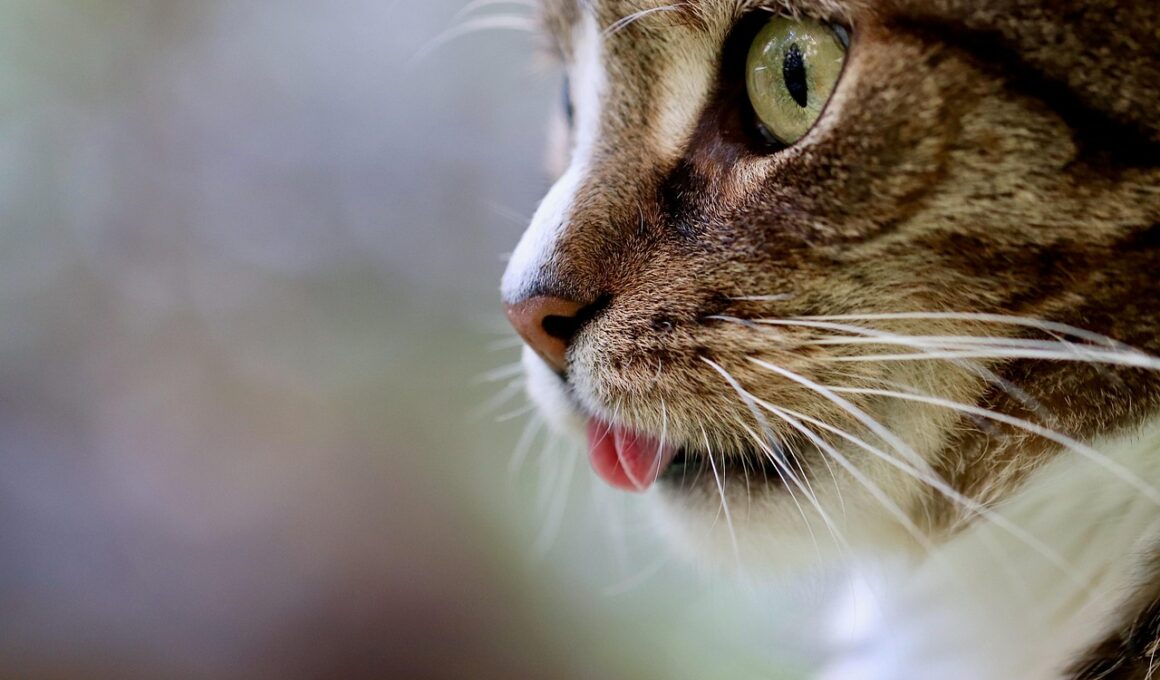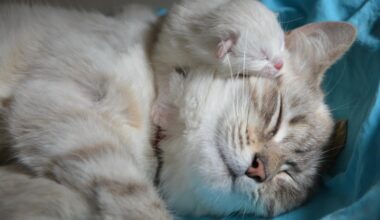The Science Behind Why Cats Love Caves and Igloos
Cats are fascinating creatures with intrinsic behaviors that reveal much about their personalities and needs. One of the standout patterns is their attraction to enclosed spaces, such as caves and igloos. These seemingly simple structures offer not just a place to hide but a sanctuary for them. According to behavioral studies, cats enjoy the warmth and security provided by such dens. It mimics their instinctive hunting and hiding behaviors from the wild. This need for safety stems from their ancestors who required protective environments to thrive. In essence, soft-sided caves and igloos meet both physical comfort and psychological safety, alleviating anxiety levels for many felines. Moreover, they serve as retreat areas where cats can recharge both mentally and physically, enhancing overall well-being. The social nature of cats plays a pivotal role too; having a den allows them to engage in natural instincts without feeling vulnerable. Furthermore, creating diverse environments for cats may facilitate enrichment, encouraging them to explore, play, and rest more effectively while feeling secure.
Interestingly, the design of cat caves and igloos contribute significantly to their appeal with cats. Often made from soft, cozy materials, they provide a tactile experience that is inviting and warm. Cats have finely tuned senses, particularly their sense of touch, making them sensitive to textures. When they curl up within these snug structures, they enjoy the warm embrace, mimicking their natural tendencies to seek comfort. Additionally, the insulation provided by these cave-like spaces helps maintain a cat’s body heat, adding to their physical comfort. Furthermore, the enclosed nature of these shelters creates a sense of privacy, which is crucial for a cat’s mental health. This privacy allows cats to observe their surroundings without being seen, offering a feeling of security while engaging in natural inquisitive behavior. The psychological benefits of having secure spaces cannot be overstated; they provide reprieve from stressful environments, which is essential for indoor cats that may feel overstimulated. Allowing a cat access to caves and igloos can foster a tranquil environment that nurtures well-being.
Types of Cat Caves and Igloos
Cat caves and igloos come in various styles and designs, catering to the diverse preferences of felines. For instance, traditional igloo-shaped dwellings often have a rounded appearance, mimicking natural animal dens. These structures typically provide a small entrance, ensuring that cats feel safe and sheltered inside. On the other hand, there are open-style caves which offer a bit more visibility while still retaining the essence of security. Many modern designs incorporate playful elements like tunnels or multiple entrances, creating a more engaging play space. Some cat caves are even made from natural materials, such as wool or sisal, promoting sustainability while also appealing to eco-conscious pet owners. Additionally, specialized beds may include features like heated pads or removable covers that enhance their functionality and comfort. Regardless of the design, the core principle remains rooted in providing a nurturing environment for cats. Thus, choosing a structure that caters to your cat’s individual preferences while ensuring comfort and safety is essential for fostering happiness and health in your feline friend.
Moreover, cat caves and igloos play a role in alleviating common behavioral issues, notably anxiety and stress. Cats are creatures of habit, and changes in their environment can lead to anxiety, especially in multi-pet households. By offering a secure retreat, cats can manage their stress levels more effectively. Research indicates that providing a dedicated space promotes calmness, allowing cats to escape when they feel overwhelmed. As a result, many cat owners notice a reduction in stress-related behaviors such as excessive vocalization or aggressive tendencies towards other pets. Importantly, these structures often fulfill your cat’s instinctual scratching and climbing needs, thus providing an outlet for their natural behavior patterns. In addition, cat caves may serve as hiding spots for shy or timid cats, giving them the confidence to emerge when ready. Building a conducive environment that acknowledges your cat’s instincts not only helps mitigate anxiety but also leads to healthier social interactions among household pets. Therefore, understanding the significance of caves is vital for any responsible cat owner.
The Importance of Enrichment
In addition to physical comfort, providing enrichment in the form of caves and igloos significantly enhances a cat’s quality of life. Enrichment refers to incorporating elements that stimulate a cat’s mental and physical senses. When cats have access to environments featuring multi-dimensional designs, such as tunnels interlinked with caves, they engage in exploration and play. These activities mimic their natural hunting instincts, which promotes physical fitness and cognitive development. With a combination of scratching surfaces, cozy dens, and interactive toys located near these structures, cats can lead healthier lives. Furthermore, interacting with these complexes satisfies a cat’s need for exploration, reducing boredom and discouraging destructive behaviors. Additionally, these experiences enhance both their physical wellness and mood, resulting in a happier, more engaged pet. Ultimately, achieving this balance contributes positively to the cat’s lifestyle and well-being. Thus, investing in various enrichment forms, including cat caves and igloos, becomes crucial for every cat parent seeking to promote a fulfilling life for their furry companions.
It is worth mentioning that the variety of cat caves and igloos caters to different breeds and personalities of cats. Some cats may exhibit more denning behavior, seeking out enclosed spaces for comfort and hiding. In contrast, more social and outgoing breeds may prefer open designs that allow visibility while still providing a degree of protection. Understanding your cat’s individual preferences can assist you in selecting the right cave or igloo. Furthermore, certain designs might be more suitable for kittens or older cats with mobility challenges. Observing feline behavior can provide essential insights into type inference and preferences; thus creating an enriching environment becomes increasingly rewarding. When deciding on which cave or igloo to purchase, consider factors such as durability, ease of cleaning, and the overall aesthetic that matches your home. Ultimately, the perfect cave or igloo should be functional, comfortable, and appealing both to you and your beloved cat. By aligning with their innate preferences, you can truly enhance their living space while satisfying their natural instincts.
Conclusion
In conclusion, understanding why cats are drawn to caves and igloos reveals a lot about their behavioral needs and instincts. Providing a safe, comforting haven enhances their quality of life while fulfilling essential needs for safety, warmth, and exploration. The variety of designs available caters to different preferences, enabling pet parents to select ideal options aligned with their cat’s unique personality. As seen, these structures also have therapeutic benefits, helping alleviate anxiety and stress among cats. The insight gained about the importance of enrichment highlights how essential caves and igloos are in fostering a harmonious living environment. When you invest in your cat’s environment, you’re investing in their well-being. In addition, enhancing their habitat can promote healthier social dynamics between multiple pets in the household. As responsible cat caregivers, it’s crucial to understand and meet these essential needs, allowing cats to exhibit their natural instincts comfortably. While simple in design, the benefits of cat caves and igloos are profound, contributing positively to the happiness and health of your feline friends.


